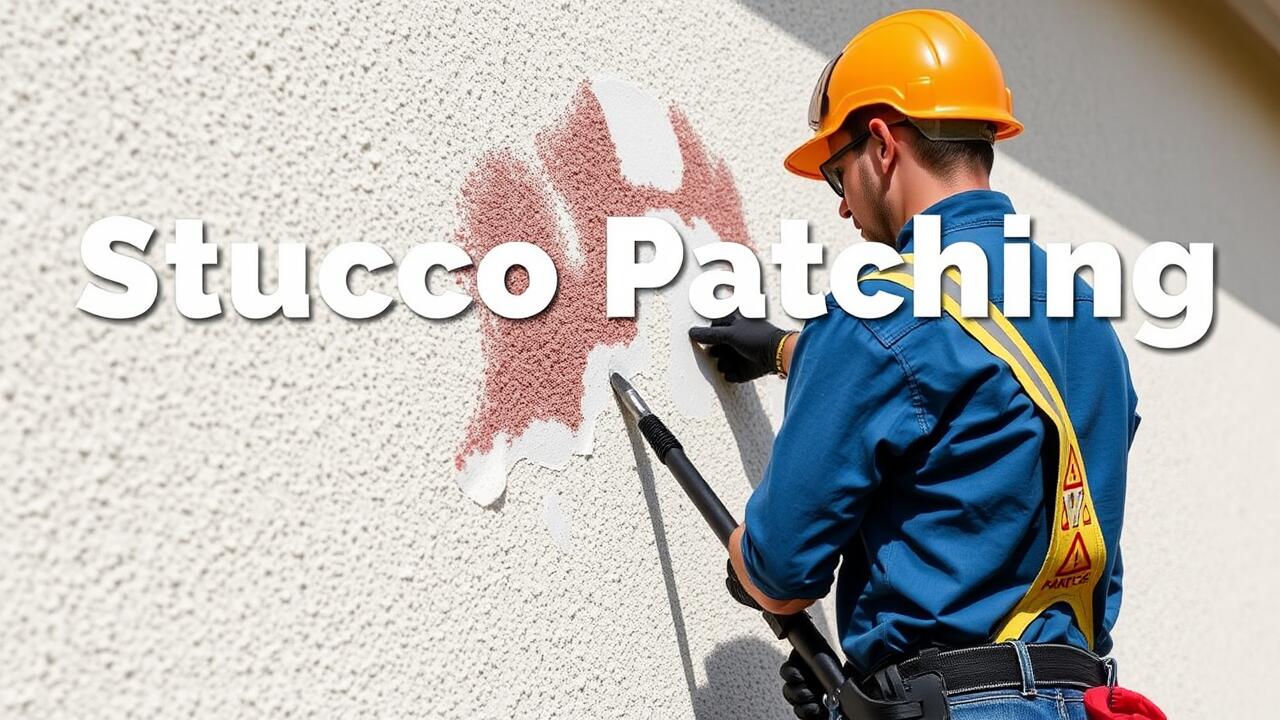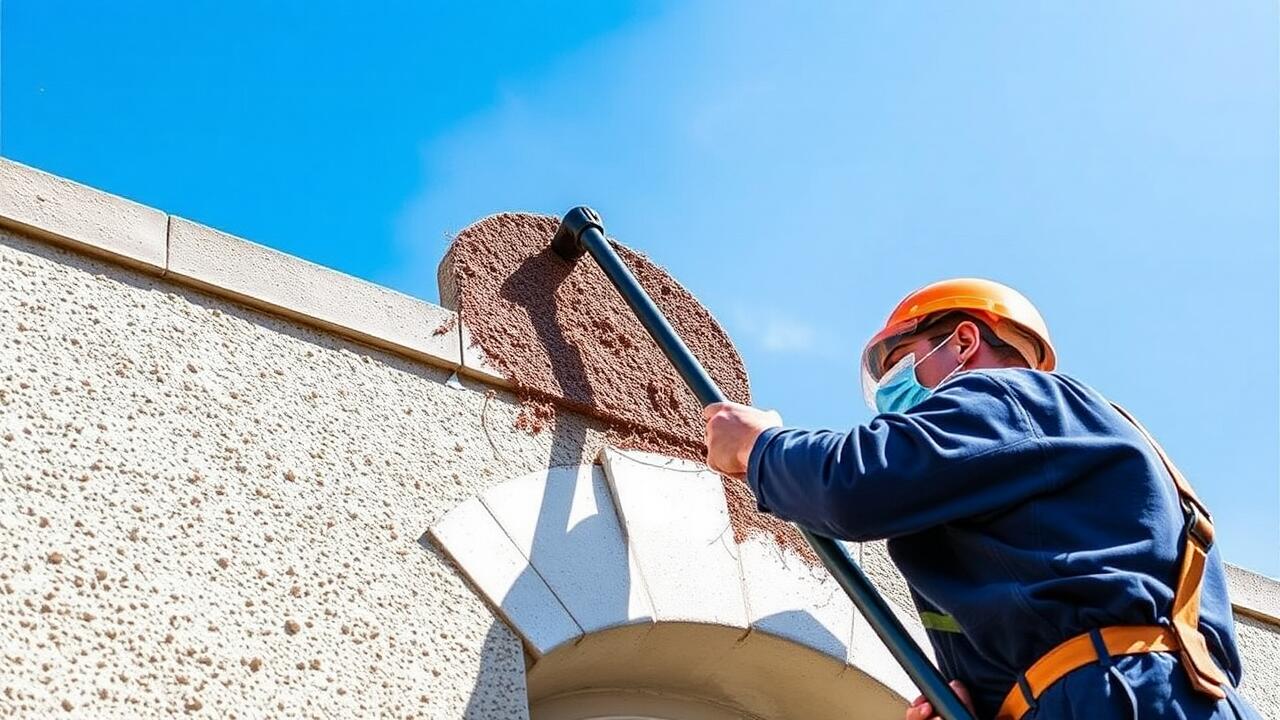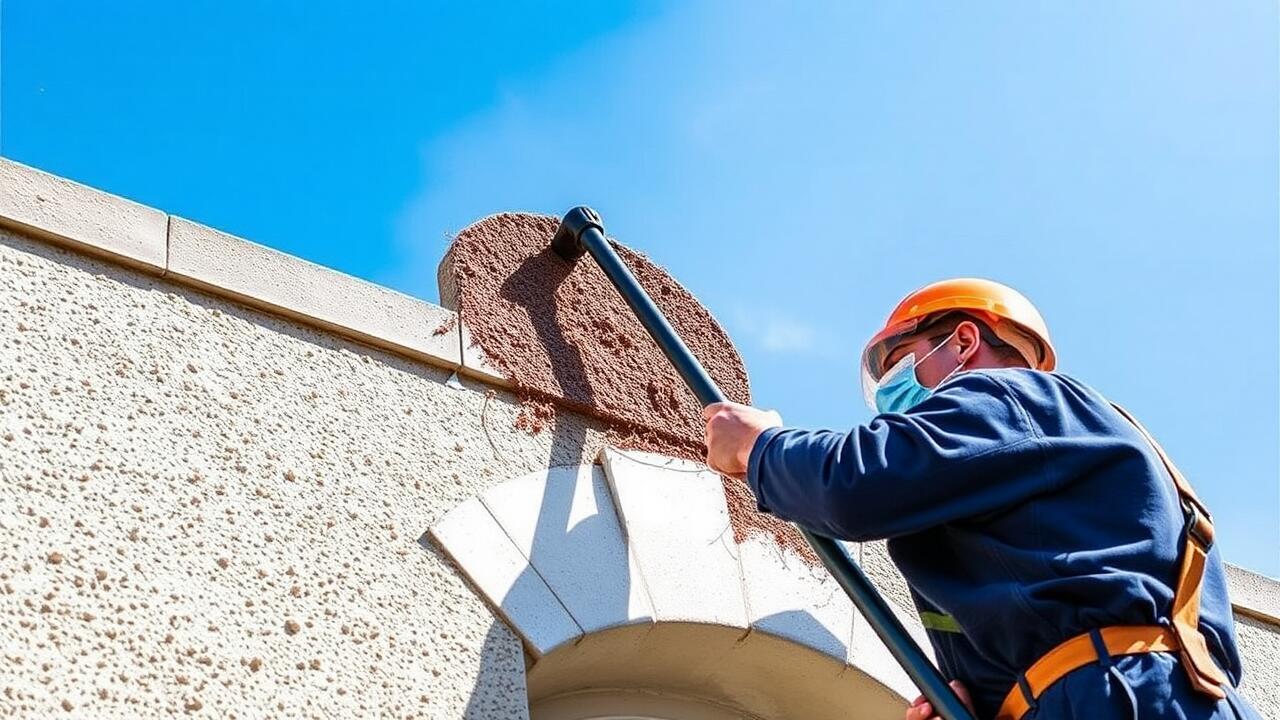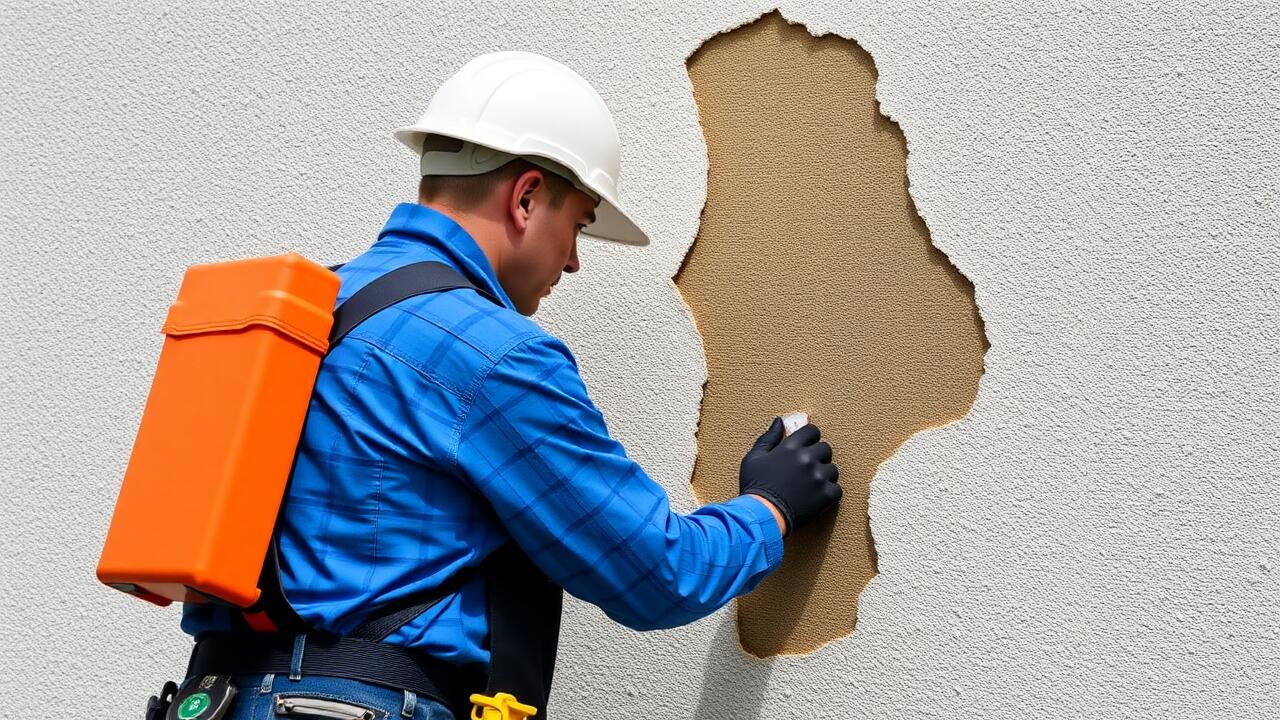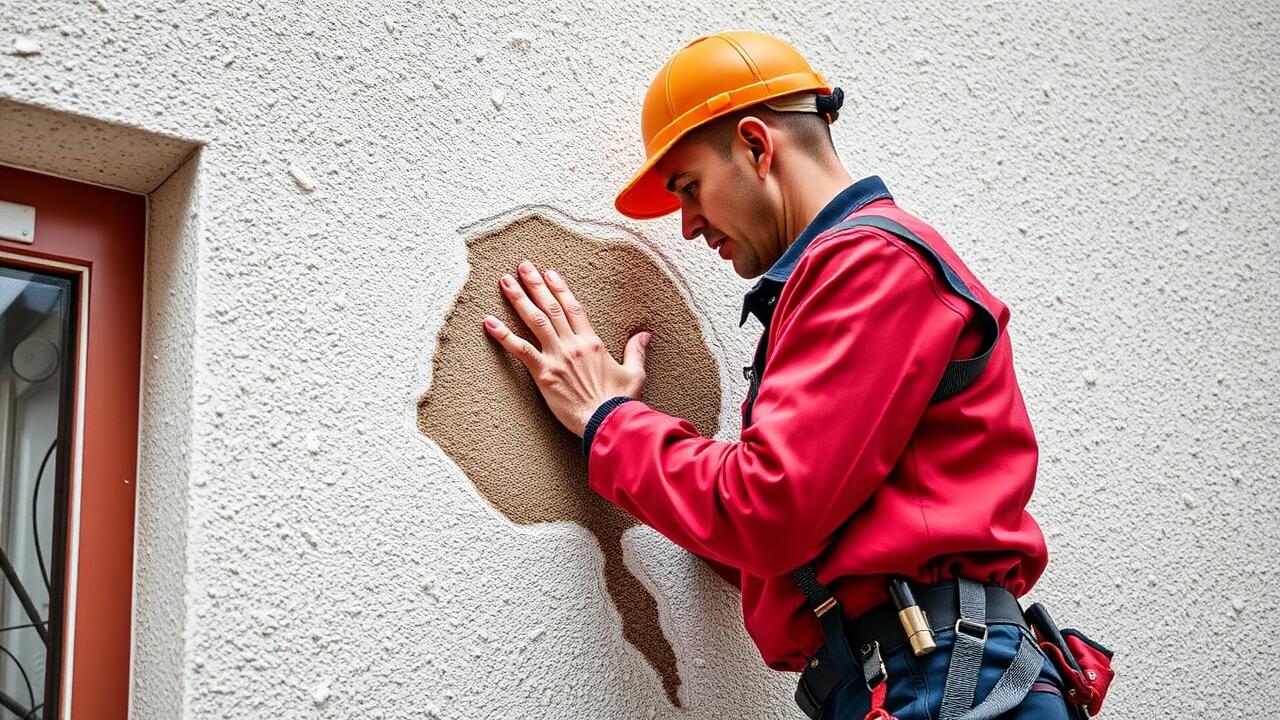
Applying the Repair Mixture
When applying the repair mixture, it is important to start with a clean surface. Remove any loose particles or debris from the hole to ensure proper adhesion. Mix the stucco patch according to the manufacturer's instructions, achieving a consistency similar to peanut butter. Using a trowel, press the mixture into the hole, making sure to fill it completely. For larger holes, applying the patch in layers may be necessary to prevent sagging or cracking as it dries.
After filling the hole, it's crucial to apply the material slightly above the surrounding stucco surface. This allows for shrinkage during drying, minimizing the risk of leaving a visible dip. Smooth the surface with the trowel, feathering the edges to blend with the existing texture. If you're considering Stucco Patching in San Pedro, Los Angeles, ensure you follow the specific local guidelines and consider hiring a professional if the repair is extensive.
Techniques for Filling the Hole Properly
Filling a hole in stucco requires careful attention to ensure a seamless repair. Start by applying a bonding agent to the edges of the hole. This helps the patch adhere properly and minimizes the risk of cracking later. Next, mix the repair compound according to the manufacturer's instructions. A trowel or putty knife is essential for working the mixture into the hole. Press firmly to eliminate any air pockets. Gradually build up the compound above the surface, allowing it to settle as you work.
Once the hole is filled, smoothing the repair is the next step. Use a damp sponge or trowel to blend the patch with the surrounding area. This creates a more natural appearance and reduces the visibility of the repair. For those seeking professional assistance, companies specializing in stucco patching in Koreatown, Los Angeles, can provide expertise. Their experience ensures that the finished result not only looks good but also stands the test of time against the elements.
Smoothing the Surface
After applying the repair mixture, achieving a smooth surface is crucial for a seamless finish. Start by using a trowel to gently feather the edges of the patched area. This helps blend the new mixture with the existing stucco. If the hole is larger, you might need to build up layers gradually, allowing each layer to set before applying the next. A sponge or wet rag can also be employed to clean the edges and refine the texture, ensuring a uniform appearance.
In areas like Palms, Los Angeles, where exterior aesthetics are important, taking extra care during this phase can make a significant difference. Aside from trowels, a stucco float may also be useful to further smooth out the surface. For a textured finish, consider using a brush or a different type of float to match the surrounding stucco. The key is to work carefully and patiently, as rushing can lead to an uneven surface that stands out against the original facade.
Tools and Methods for Finishing
To achieve a smooth finish after repairing a stucco hole, using the right tools is essential. A trowel is a primary tool for applying and smoothing the stucco mixture. For smaller holes, a putty knife can be helpful for precise application. You may also need a sponge or a brush to blend the patch with the surrounding texture. Proper tools ensure the new material adheres well and blends seamlessly with the existing exterior.
In Los Feliz, Los Angeles, technique plays a significant role in the finishing process. After filling the hole, take time to feather the edges to create a transition that matches the existing texture. Using a textured roller or stamp can replicate the stucco pattern found on the surrounding wall. Careful attention to detail during this stage will enhance the overall appearance of your repair, making it less noticeable in the long run.
Allowing for Drying and Curing
After applying the stucco repair mixture, it is crucial to allow sufficient time for drying and curing. The process can vary depending on weather conditions. Generally, temperatures above 50°F and low humidity levels promote the best results. Ensure that the patched area is not exposed to direct sunlight for extended periods, as this can cause rapid drying and lead to cracking. Protect the surface with a damp cloth or plastic sheeting if necessary.
Proper curing is essential to achieve a durable and resilient finish. For optimal results, keep the patched area moist for at least 48 hours, especially in warmer climates, to promote hydration within the stucco. Regularly mist the surface with water during this period. For homeowners considering Stucco Patching in Tarzana, Los Angeles, maintaining the right environment during the curing process will significantly impact the quality and longevity of the repair.
Best Practices for Properly Curing Stucco
Properly curing stucco is crucial to ensure a strong and durable repair. After applying the repair mixture, it is advisable to keep the area moist for several days. Spraying the patched section lightly with water multiple times a day helps to prevent the stucco from drying out too quickly. This method allows the chemical processes within the stucco to occur effectively, promoting a solid bond and enhancing the overall integrity of the repair.
In regions like Los Feliz, Los Angeles, where temperatures can fluctuate, monitoring moisture levels is especially important. Using burlap or a curing blanket can provide additional protection during high temperatures or windy conditions. These best practices not only improve the finish of the patch but also contribute to the longevity of the repair. For those considering professional involvement, local experts specializing in Stucco Patching in Los Feliz, Los Angeles, can provide tailored advice and services to ensure optimal results.
FAQS
What materials do I need to repair a hole in exterior stucco?
You will need a stucco repair mixture or patching compound, a trowel, a putty knife, a spray bottle with water, and possibly a primer or paint to finish the repair.
How do I prepare the area before applying the repair mixture?
Clean the area around the hole by removing any loose or crumbling stucco, dust, or debris. Dampen the edges with water to help the repair mixture adhere better.
Can I use regular cement to repair a stucco hole?
While regular cement can be used in some cases, it's best to use a specialized stucco repair mixture designed for this purpose to ensure proper adhesion and texture matching.
How long does it take for stucco repairs to dry and cure?
Drying time can vary based on environmental conditions, but generally, stucco repairs should dry for at least 24 hours. Full curing may take up to a week or longer, so it's important to keep the area moist during this period.
What should I do if the repair doesn’t match the surrounding stucco?
If the repair area doesn’t match, you can use a stucco texture brush or spray to replicate the existing texture. Once dry, you can also paint the repair to blend it with the surrounding area.
